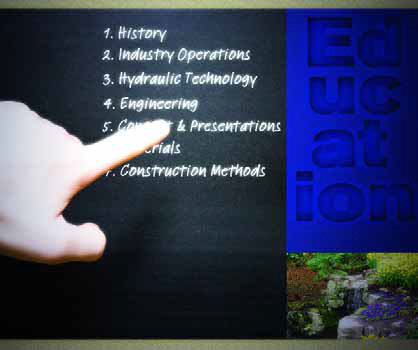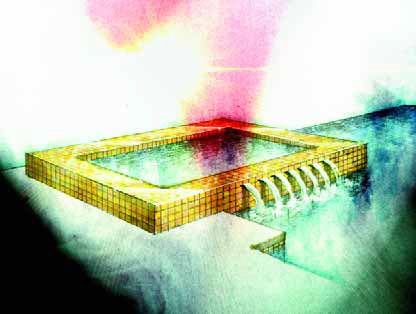presentation
'The creation of something outstanding, something that stirs an emotional response, something that establishes an ongoing, extraordinary experience for clients and anyone else who sees our work all starts with the passion we have in our hearts for art and its intimate relationship to what we do as watershapers.' That's how David Tisherman opened his Details column in the October 2005 edition of WaterShapes. He continued: 'I believe that unless you appreciate and
I think we can all agree that design communication between architects, engineers, designers and contractors should be clear and concise. If that’s the case, it follows that plans and other construction documents should be uniform in their organization and layout – in other words, that they should follow a set of standards to which everyone in the design/construction community can and will adhere. Why the bother? The plain fact is that any given project involves a cast of characters that will be different – sometimes completely so – from just about any other project. This is why I’m such a strong advocate for
It’s an unfortunate fact that landscape architects receive little or no formal education in watershaping while they’re in school. As a result, where the typical landscape architect’s irrigation plan will show every pipe, fitting, wire and component for a given project, that same project’s pool plan will carry almost no detail at all. This phenomenon begs the question: Why don’t our colleges and universities do more to educate landscape architects about watershaping? The answer to this question causes me double pain, because I know full well that
In this day and age, designers have a variety of ways to communicate their ideas to clients - hand drawings, models and computer imagery among them. We also know every client is unique and that each has his or her own way of absorbing information and processing concepts. Although there are some who never fully understand a designer's vision until a project's been built, most clients will accept one style of design presentation or another and in some way visualize what's happening. In the project we're currently engaged in with an historic Spanish Colonial Revival home in Orange County, Calif., however, we at Holdenwater, a design firm based in Fullerton, Calif., have had to use four
In this day and age, designers have a variety of ways to communicate their ideas to clients - hand drawings, models and computer imagery among them. We also know every client is unique and that each has his or her own way of absorbing information and processing concepts. Although there are some who never fully understand a designer's vision until a project's been built, most clients will accept one style of design presentation or another and in some way visualize what's happening. In the project we're currently engaged in with an historic Spanish Colonial Revival home in Orange County, Calif., however, we at Holdenwater, a design firm based in Fullerton, Calif., have had to use four
Last time, I described (at great length, as you may have noticed) what happens in the time between my initial phone conversation with clients and a point just ahead of my formal presentation of a design. It's an involved process that uses all of the information I've gleaned from my clients about what they want, what they think they need and what they ultimately expect to have in their backyard environments. It's about understanding the underlying circumstances, deciding what should be done and, finally, assembling all of that insight into a
Last time, I described (at great length, as you may have noticed) what happens in the time between my initial phone conversation with clients and a point just ahead of my formal presentation of a design. It's an involved process that uses all of the information I've gleaned from my clients about what they want, what they think they need and what they ultimately expect to have in their backyard environments. It's about understanding the underlying circumstances, deciding what should be done and, finally, assembling all of that insight into a
Through the years in these pages and elsewhere, I've been a persistent critic of the shortcomings of the watershaping trades in general - and especially of the pool and spa industry in which I've operated for more than 25 years. Sometimes I've been harsher than others, but my intent has invariably been to define the difference between quality work that elevates the trade and the junk that's held back our industry's reputation. I've never named names, but I've been particularly hard on practitioners who seem eternally stuck in old ways of thinking and working: Their work seldom lines up with the best efforts of which the industry is capable. Just recently, I had a long talk with WaterShapes' editor in which we discussed the development of a new approach to




















The Currency of Beauty